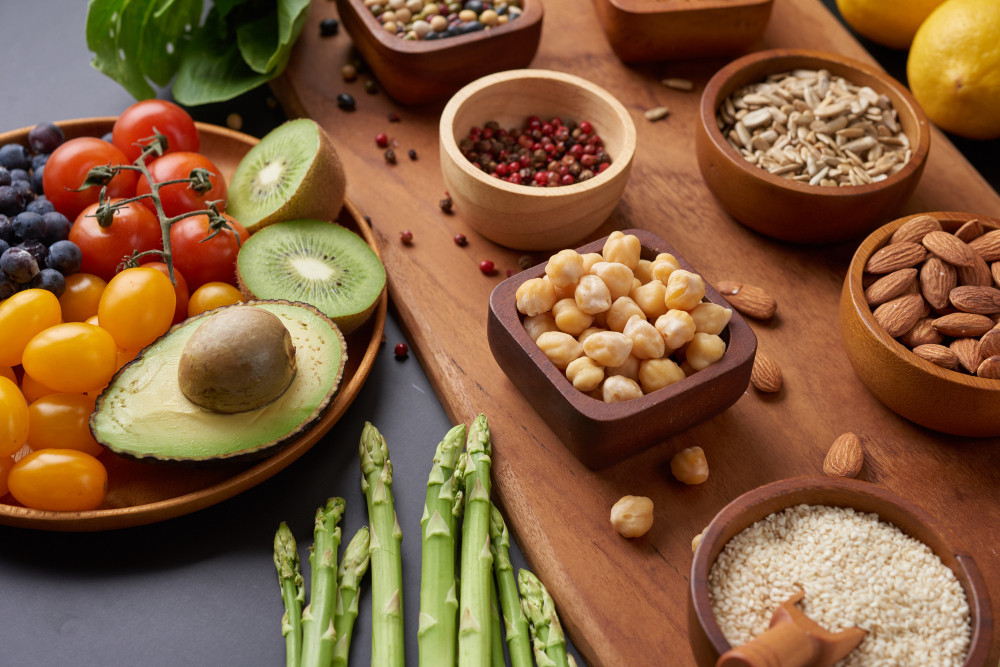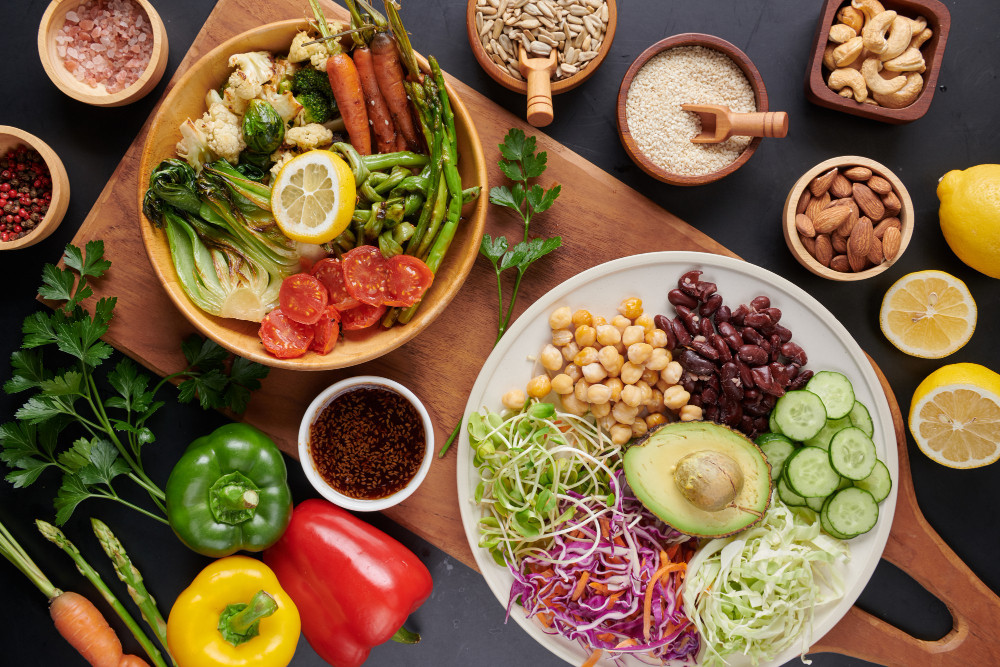Saat makan, umumnya Anda dianjurkan untuk makan makanan yang mengandung serat tinggi agar proses pencernaan berjalan lancar. Namun pada kondisi medis tertentu, seseorang justru dianjurkan untuk menerapkan diet rendah serat. Seperti apa diet rendah serat dan bagaimana pola makan ini dilakukan? Simak ulasannya dalam artikel berikut.
Apa Itu Diet Rendah Serat?
Serat adalah nabati yang tidak tercerna ketika melewati usus halus. Serat dapat dibagi menjadi dua, yaitu serat larut air (soluble fiber) yang berfungsi memperlambat pencernaan dan mendukung penyerapan makanan dan serat tidak larut air (nonsoluble fiber) yang berfungsi melancarkan pergerakan usus dan mencegah sembelit.
Setiap hari kita dianjurkan mengonsumsi serat untuk melancarkan pencernaan makanan, namun beberapa kondisi medis tertentu justru menganjurkan sebaliknya, yaitu menjalani diet rendah serat. Diet rendah serat adalah pola makan dimana seseorang perlu mengonsumsi serat dalam jumlah rendah untuk mengistirahatkan pencernaan. Biasanya pola makan ini menganjurkan seseorang untuk makan serat tidak lebih dari 10-15 gram per hari.
Diet rendah sehat dapat mengistirahatkan sistem pencernaan dengan cara:
- Mengurangi jumlah makanan yang tidak tercerna yang bergerak melalui usus
- Mempermudah kerja sistem pencernaan
- Mengurangi jumlah tinja yang diproduksi
- Meredakan nyeri perut, diare, dan gejala lainnya
Biasanya dokter merekomendasikan diet rendah serat untuk pasien yang mengalami gangguan pencernaan seperti:
- Diare
- Kram perut
- Sindrom iritasi usus besar
- Divertikulitis
- Penyakit Crohn (peradangan saluran cerna)
- Kolitis ulseratif (peradangan pada usus besar dan rektum)
- Baru menjalani operasi usus seperti ileostomi atau kolostomi
Baca Juga: Benarkah Diet Plant-Based Bisa Mengurangi Mendengkur?
Bagaimana Melakukan Diet Rendah Serat?
Dalam menjalani diet rendah serat, Anda perlu mengurangi porsi serat hingga 10 mg/hari. Serat tidak hanya terdapat pada sayuran, namun juga pada buah, karbohidrat, dan protein, sehingga Anda perlu lebih selektif dalam memilih jenis makanan yang dikonsumsi dan mengatur takarannya.
Jenis makanan yang bisa dikonsumsi dalam diet rendah serat adalah makanan yang mengandung serat rendah. Sebaiknya, dalam diet ini Anda dianjurkan menghindari makanan yang mengandung serat tinggi.
Beberapa jenis makanan yang bisa dikonsumsi dalam diet rendah serat antara lain:
Karbohidrat
- Boleh dimakan:
- Roti putih
- Pasta
- Nasi putih
- Sereal rendah serat
- Sebaiknya dihindari:
- Roti gandum utuh
- Pasta gandum utuh
- Sereal gandum utuh
- Flaxseed
- Beras merah
Sayuran
- Boleh dimakan:
- Wortel
- Buah bit
- Labu siam
- Sayuran tanpa kulit, biji, atau tangkai
- Jus sayuran
- Sebaiknya dihindari:
- Sayuran kelompok cruciferous seperti brokoli, kembang kol, cuciwis, dan kubis
- Kangkung
- Paprika
- Bawang bombay
- Bawang putih
Baca Juga: Sering Dikira Sama, Ini Perbedaan Nutrisionist dan Dietisian
Buah-buahan
- Boleh dimakan:
- Jus buah tanpa ampas
- Melon
- Semangka
- Pisang
- Apel kupas
- Alpukat
- Sebaiknya dihindari:
- Plum
- Jeruk
- Jeruk bali
- Tomat
Protein dan lemak
- Boleh dimakan:
- Telur
- Tahu
- Ayam
- Ikan
- Selai kacang halus
- Sebaiknya dihindari:
- Kacang-kacangan
- Polong-polongan
- Biji-bijian
Saat menjalani diet rendah serat, Anda rentan mengalami sembelit. Untuk mencegahnya, Anda perlu mengimbangi pola makan dengan memperbanyak minum air putih atau cairan lainnya. Contoh menu makan dalam menu diet rendah serat antara lain:
Sarapan:
- Cornflakes dengan susu
- Roti panggang dengan selai kacang
- Jus buah
- Kopi
Makan siang:
- Nasi dengan dada ayam
- Roti dengan isian tuna dan mayones
Makan malam:
- Ikan panggang
- Kentang tumbuk dengan wortel rebus
- Susu
Diet rendah serat umumnya direkomendasikan dalam waktu singkat, hingga kondisi sistem pencernaan Anda membaik. Jika Anda sudah mulai pulih, Anda bisa mulai mengonsumsi serat secara perlahan sesuai anjuran dokter.
Jika memiliki pertanyaan seputar nutrisi, Anda bisa berkonsultasi ke dokter atau ahli gizi. Anda juga bisa memanfaatkan fitur konsultasi yang tersedia dalam aplikasi Ai Care. Yuk, unduh aplikasi Ai Care di App Store atau Play Store sekarang juga!
Mau tahu informasi seputar nutrisi, makanan dan tips diet lainnya? Cek di sini, ya!
- dr Nadia Opmalina
Mayo Clinic. Low-fiber diet do's and don'ts. Available from: https://www.mayoclinic.org/healthy-lifestyle/nutrition-and-healthy-eating/in-depth/low-fiber-diet/art-20048511
Whelan, C. (2023). How to Eat (and Recover from) a Low Fiber Diet. Available from: https://www.healthline.com/health/low-fiber-diet
Lewin,J. What to eat and avoid on a low-fiber diet. Available from: (2024). https://www.medicalnewstoday.com/articles/321548
Mount Sinai. Low-fiber diet. Available from: https://www.mountsinai.org/health-library/selfcare-instructions/low-fiber-diet












